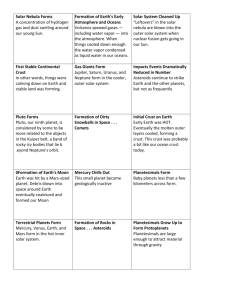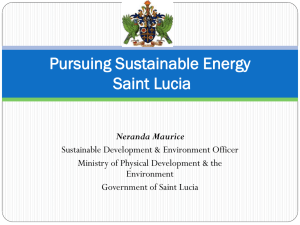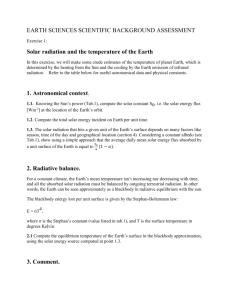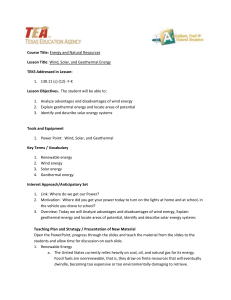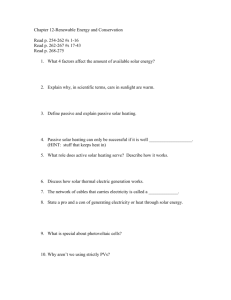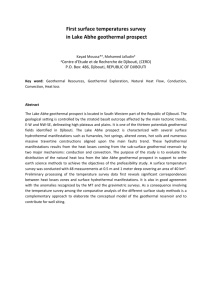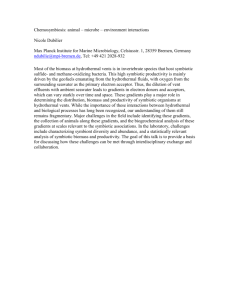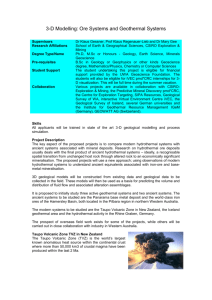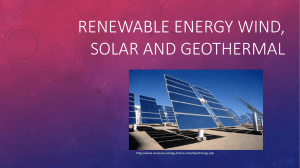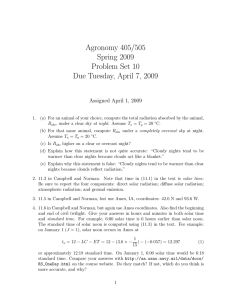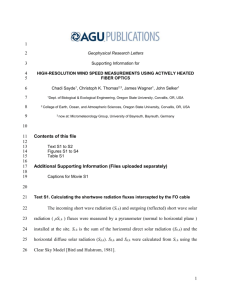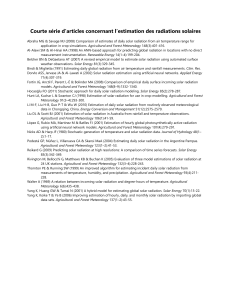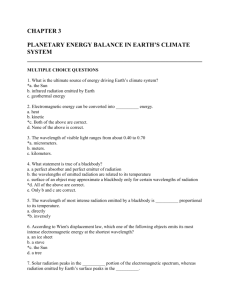Homework Solutions - faculty at Chemeketa
advertisement
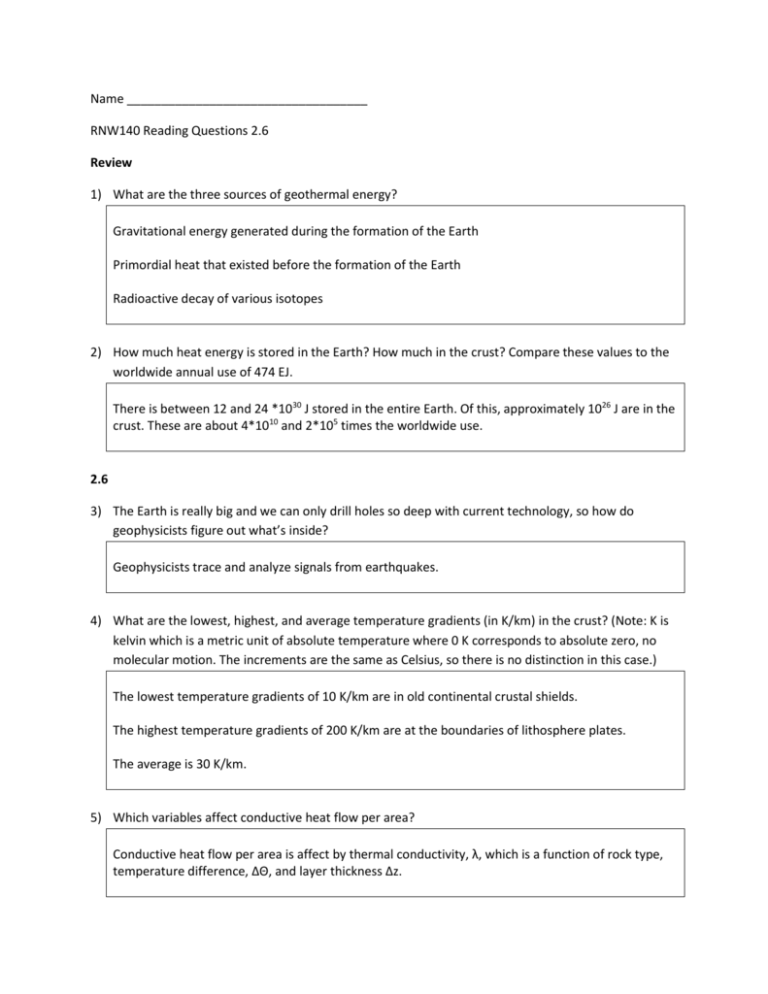
Name ___________________________________ RNW140 Reading Questions 2.6 Review 1) What are the three sources of geothermal energy? Gravitational energy generated during the formation of the Earth Primordial heat that existed before the formation of the Earth Radioactive decay of various isotopes 2) How much heat energy is stored in the Earth? How much in the crust? Compare these values to the worldwide annual use of 474 EJ. There is between 12 and 24 *1030 J stored in the entire Earth. Of this, approximately 1026 J are in the crust. These are about 4*1010 and 2*105 times the worldwide use. 2.6 3) The Earth is really big and we can only drill holes so deep with current technology, so how do geophysicists figure out what’s inside? Geophysicists trace and analyze signals from earthquakes. 4) What are the lowest, highest, and average temperature gradients (in K/km) in the crust? (Note: K is kelvin which is a metric unit of absolute temperature where 0 K corresponds to absolute zero, no molecular motion. The increments are the same as Celsius, so there is no distinction in this case.) The lowest temperature gradients of 10 K/km are in old continental crustal shields. The highest temperature gradients of 200 K/km are at the boundaries of lithosphere plates. The average is 30 K/km. 5) Which variables affect conductive heat flow per area? Conductive heat flow per area is affect by thermal conductivity, λ, which is a function of rock type, temperature difference, ΔΘ, and layer thickness Δz. 6) How much energy per year is radiated by the Earth into the atmosphere? Compare this figure to 474 EJ and compare it to the energy is solar radiation. The Earth radiates about 1000 EJ per year which is about twice worldwide annual energy use. Solar radiation is 20,000 times the Earth’s radiation. 7) What are the depths for which solar radiation dictates the temperature of the Earth? 10 to 20 m 8) Briefly describe each of the different types of geothermal heat reservoirs There is heat in the shallow Earth (up to 10 or 20 m and influenced by solar radiation), hydrothermal low pressure reservoirs (up to 250 °C), hydrothermal high pressure reservoirs (mixed with gas such as methane), hot dry rocks (little water, but has the largest potential), and magma deposits (over 700 °C and technologically challenging). 9) What temperature is needed for geothermal electricity generation? 130 °C 10) What can be done with geothermal heat at a temperature below the above? It can be used to directly supply heat (homes, industry, etc.) It can be used indirectly supply heat with heat pumps. It can be used in hot spring to clean up hippies.




